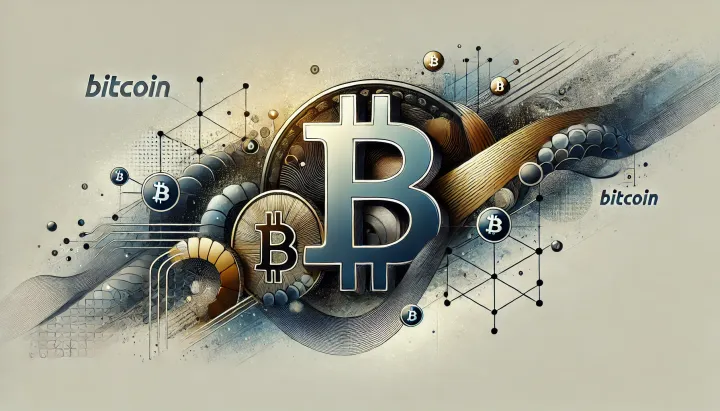Max Keiser & Stacy Herbert on Bitcoin Statecraft and IMF Leverage
The inaugural April 23 2025 episode of the Archie Podcast features Max Keiser and Stacy Herbert explaining how El Salvador’s legal-tender leap and the US strategic-reserve order reshape global Bitcoin policy.

- My 'briefing notes' summarize the content of podcast episodes; they do not reflect my own views.
- They contain (1) a summary of podcast content, (2) potential information gaps, and (3) some speculative views on wider Bitcoin implications.
- Pay attention to broadcast dates (I often summarize older episodes)
- Some episodes I summarize may be sponsored: don't trust, verify, if the information you are looking for is to be used for decision-making.
Summary
The inaugural April 23 2025 episode of the Archie Podcast features Max Keiser and Stacy Herbert explaining how El Salvador’s legal-tender leap and the United States’ strategic-reserve order reshape global Bitcoin policy. They link gang-free growth, mandatory education, and record hash-rate to a widening moat around Bitcoin while warning that custody concentration and IMF covenants still pose risks. Their analysis identifies urgent research needs on sovereign credit, energy metrics, and bipartisan safeguards.
Take-Home Messages
- Strategic Reserves: Nation-state accumulation has moved from theory to practice, pressuring late adopters.
- Education Advantage: El Salvador’s compulsory Bitcoin curriculum builds durable adoption that ETFs cannot replicate.
- Custody Concentration: Wall Street ETFs boost liquidity yet revive systemic risk through off-chain rehypothecation.
- Energy Optics: Policymakers need credible mining-emissions baselines or activist pressure will curb hash-rate growth.
- IMF Trade-offs: Cheap credit today may constrain future Bitcoin flexibility, making fiscal modeling essential.
Overview
Max Keiser recounts Bitcoin’s shift from 2010 “outlaw niche” to 2025 Wall Street darling, crediting Bitcoin Beach and Strike for inspiring El Salvador’s legal-tender law. Stacy Herbert notes that early volatility functioned as free advertising, planting the idea that money could operate beyond state control. Together they frame legal tender as a deliberate startup strategy rather than a publicity stunt.
The pair describe El Salvador’s transformation as a peace-dividend flywheel: gang crackdowns lowered homicide rates, tourism boomed, and construction surged. Mandatory Bitcoin instruction now spans second grade to civil-service seminars, giving the country what Herbert calls a “national moat.” IMF financing remains vital, so negotiators preserved sovereignty by keeping Bitcoin in the curriculum and on the balance sheet.
U.S. policy swings dominate the external risk landscape. Trump’s executive order on a strategic Bitcoin reserve aligns federal intent with ETF-driven inflows, yet Democratic hostility lingers. Keiser warns that partisan whiplash could stall corporate treasury adoption worldwide unless bipartisan guardrails emerge.
Market discussion pivots to Ethereum’s weak ETF debut versus Bitcoin’s record inflows and soaring hash-rate. Herbert interprets the 35-to-1 gap as proof that “there is no second best.” Keiser adds that computational investment, not price charts, signals the long-run path where “everything trends to zero against Bitcoin.”
Stakeholder Perspectives
- Central banks: Weigh diversification benefits against lost seigniorage and reduced IMF leverage.
- Energy producers: View mining as demand for stranded power yet fear emissions-based moratoria.
- Institutional custodians: Enjoy ETF fee streams but face mounting proof-of-reserves scrutiny.
- Educators: See early-grade curricula as a breakthrough for financial inclusion and civic tech literacy.
- Civil-society groups: Celebrate crime reduction yet demand reintegration programs for former gang regions.
- Multilateral lenders: Struggle to maintain influence as Bitcoin finance offers alternative liquidity.
Implications and Future Outlook
Sovereign adoption will likely accelerate among small export economies that can trade IMF concessions for headline stability and tourism inflows. Early movers gain branding advantages and may issue Bitcoin-denominated bonds before credit ratings adjust. Lagging states risk paying a premium once reserves tighten.
Institutional participation deepens liquidity but raises systemic questions familiar from gold ETFs. If rehypothecation caps or mandatory on-chain audits are not enacted, another shadow-banking loop could form around synthetic Bitcoin claims. Policymakers have a narrow window to codify safeguards without stifling demand.
Hash-rate milestones indicate relentless capital deployment into mining infrastructure, tying Bitcoin to global energy markets. Regions with abundant renewables or stranded gas can leverage mining to balance grids and monetize excess supply. Clear emissions accounting will decide whether this synergy becomes mainstream or confronts regulatory pushback.
Some Key Information Gaps
- How can El Salvador retain loan access without surrendering Bitcoin policy autonomy? Clarifying this balance informs other dollarized states evaluating legal tender.
- Which energy accounting frameworks credibly compare mining to legacy finance emissions? Standardized metrics guide regulation and investment.
- What bipartisan U.S. legislation can insulate Bitcoin policy from electoral swings? Stable rules are crucial for corporate treasury adoption globally.
- How could regulators limit rehypothecation without choking ETF liquidity? A measured approach reduces systemic risk while preserving market depth.
- Which vocational pipelines best integrate former gang members into Bitcoin-enabled industries? Successful models multiply social dividends and support lasting security gains.
Broader Implications for Bitcoin
Monetary Sovereignty Reset
Bitcoin’s fixed supply pressures central banks to adopt hybrid reserve strategies, blending dollars with digital bearer assets to maintain credibility. As more treasuries hold BTC, bond markets may reprice default risk for states lacking hard-money buffers. This shift could redistribute geopolitical leverage toward energy-rich mid-tier nations.
Education-Led Adoption
El Salvador’s nationwide curriculum proves that monetary literacy can start in elementary school, normalizing self-custody and long-term saving from a young age. Countries replicating this model may cultivate citizens skeptical of inflationary policy, reshaping electoral incentives. Over time, widespread Bitcoin fluency could raise the global bar for fiscal transparency and central-bank accountability.
Decentralized Energy Markets
Hash-rate migration toward renewable-rich regions hints at a future where mining acts as a programmable load-balancer. If regulators embrace transparent emissions data, Bitcoin demand could underwrite new green infrastructure rather than compete with the grid. Conversely, punitive policy may push miners to jurisdictions with weaker environmental standards, diluting net-zero progress.



Comments ()